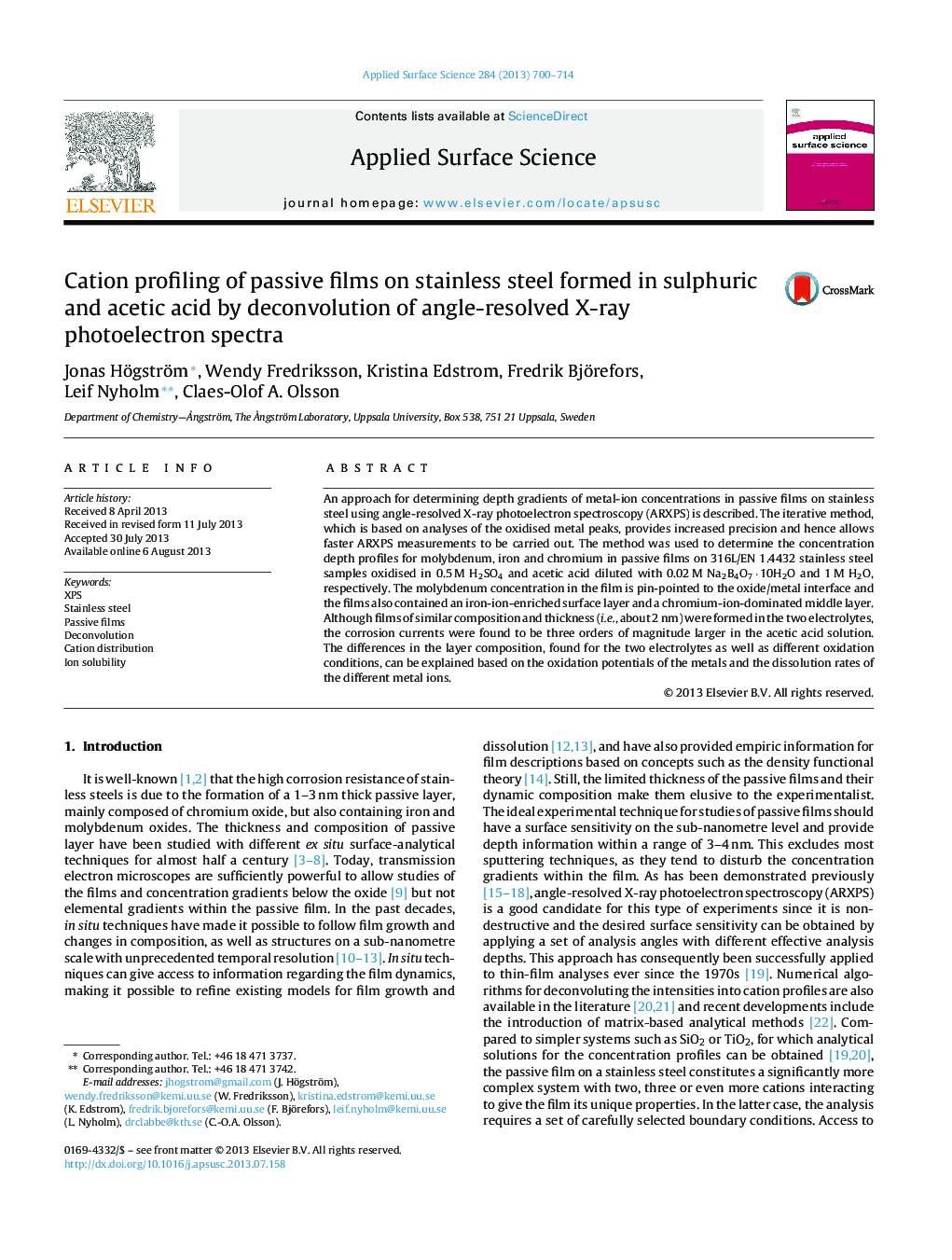| Article ID | Journal | Published Year | Pages | File Type |
|---|---|---|---|---|
| 5352664 | Applied Surface Science | 2013 | 15 Pages |
Abstract
An approach for determining depth gradients of metal-ion concentrations in passive films on stainless steel using angle-resolved X-ray photoelectron spectroscopy (ARXPS) is described. The iterative method, which is based on analyses of the oxidised metal peaks, provides increased precision and hence allows faster ARXPS measurements to be carried out. The method was used to determine the concentration depth profiles for molybdenum, iron and chromium in passive films on 316L/EN 1.4432 stainless steel samples oxidised in 0.5 M H2SO4 and acetic acid diluted with 0.02 M Na2B4O7 · 10H2O and 1 M H2O, respectively. The molybdenum concentration in the film is pin-pointed to the oxide/metal interface and the films also contained an iron-ion-enriched surface layer and a chromium-ion-dominated middle layer. Although films of similar composition and thickness (i.e., about 2 nm) were formed in the two electrolytes, the corrosion currents were found to be three orders of magnitude larger in the acetic acid solution. The differences in the layer composition, found for the two electrolytes as well as different oxidation conditions, can be explained based on the oxidation potentials of the metals and the dissolution rates of the different metal ions.
Related Topics
Physical Sciences and Engineering
Chemistry
Physical and Theoretical Chemistry
Authors
Jonas Högström, Wendy Fredriksson, Kristina Edstrom, Fredrik Björefors, Leif Nyholm, Claes-Olof A. Olsson,
